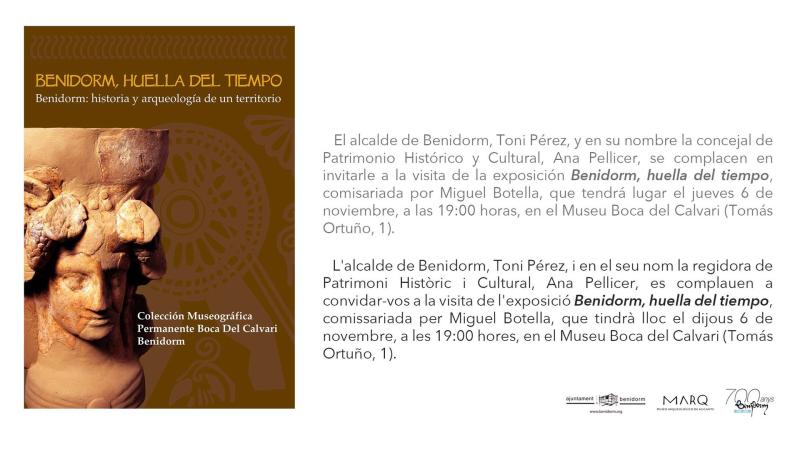The exhibition is the result of a collaboration with the MARQ, which has temporarily loaned the city eleven pieces that will be displayed alongside part of the archaeological collection
Museu Boca del Calvari opens its exhibition ‘Benidorm, a trace through time’ this Thursday, featuring pieces from prehistory to the Modern Age

The opening will take place at 7 p.m., as part of the Cultural Week of the Major Patron Saint Festivities
Boca del Calvari Museum will host ‘Benidorm, Footprints of Time’ starting this Thursday, a new exhibition promoted by the Department of Historical and Cultural Heritage of the Benidorm City Council. The exhibition will allow visitors to journey through prehistory and local history via archaeological pieces from various excavations. The Councillor for Historical and Cultural Heritage, Ana Pellicer, announced that the opening will take place this Thursday, November 6, at 7:00 p.m. and is part of the Cultural Week program of the Patron Saint Festivities. She also invited the public to “visit this fascinating exhibition, where they will be able to see for the first time some pieces that have never before been exhibited to the public in our city.”
Ana Pellicer explained that ‘Benidorm, a Trace Through Time’ is “the result of a collaboration with the Provincial Archaeological Museum, MARQ, which has temporarily loaned us eleven archaeological pieces from its collections and, in addition, facilitated the restoration of two emblematic pieces for Benidorm: the Iberian lion head and bull,” which will also be on display.
These pieces, along with the Benidorm Museum Collection and materials found in local excavations, offer visitors “a journey through the history of Benidorm, from prehistory to modern times, to promote the heritage and scientific value of our region,” the councilor stated, thanking MARQ “for its contribution and willingness to make this magnificent exhibition possible,” which is curated by archaeologist Miguel Botella.
Neolithic adzes and hand axes; Bronze Age bowls and cups; Various Iberian ceramic pieces, such as the one known as the "Fish Plate" and several incense burners in the shape of a woman's head; and rings, coins, fishhooks, needles, and knives made from different materials and from different periods, are some of the pieces that can be seen in this exhibition, all of them found in excavations carried out from 1943 to the present in sites such as Tossal de la Cala, Abric de la Cantera de la Serra Gelada, and Torre de Les Caletes.
Also included are Roman amphorae, amulets, arrowheads, and even capitals, as well as a Roman anchor stock dating from between the 2nd and 1st centuries BC, located on the seabed near the island of Benidorm, Ana Pellicer listed.
The councilwoman reiterated her invitation to the public to visit this exhibition, “which will allow them to learn much more about the history of our city through the tools used by the people who lived here long before us,” an invitation she also extended to the city's schools, institutions, and associations.
“This year we are commemorating the 700th anniversary of the founding of Benidorm as a municipality with its own legal status, but in this exhibition we will be able to see that the history of our town began to take shape long before that important date of May 8, 1325,” Pellicer concluded.
